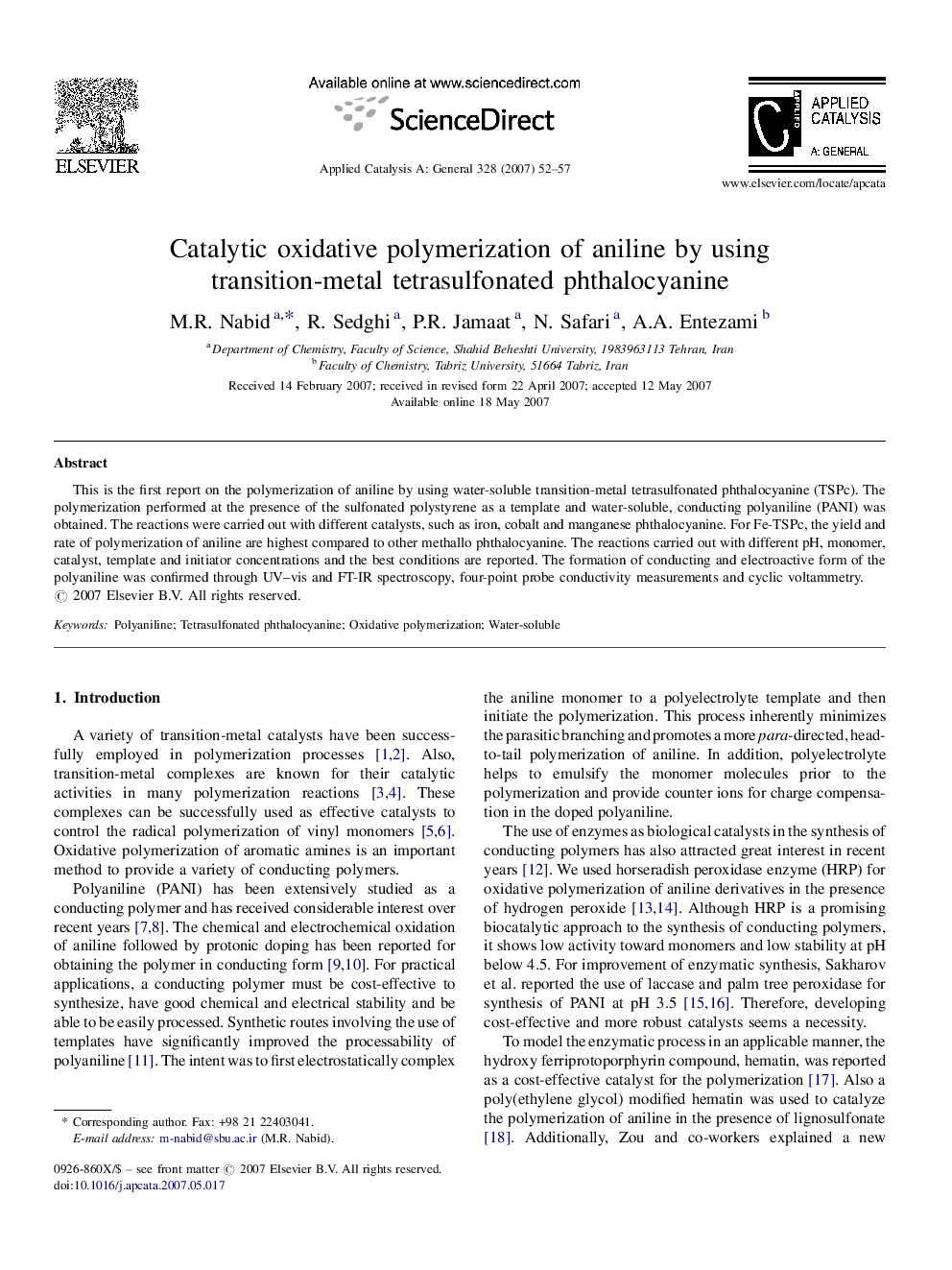| Article ID | Journal | Published Year | Pages | File Type |
|---|---|---|---|---|
| 43502 | Applied Catalysis A: General | 2007 | 6 Pages |
This is the first report on the polymerization of aniline by using water-soluble transition-metal tetrasulfonated phthalocyanine (TSPc). The polymerization performed at the presence of the sulfonated polystyrene as a template and water-soluble, conducting polyaniline (PANI) was obtained. The reactions were carried out with different catalysts, such as iron, cobalt and manganese phthalocyanine. For Fe-TSPc, the yield and rate of polymerization of aniline are highest compared to other methallo phthalocyanine. The reactions carried out with different pH, monomer, catalyst, template and initiator concentrations and the best conditions are reported. The formation of conducting and electroactive form of the polyaniline was confirmed through UV–vis and FT-IR spectroscopy, four-point probe conductivity measurements and cyclic voltammetry.
Graphical abstractA new enzymatic approach was developed to synthesize water-soluble conducting polyaniline (PANI) in the presence of sulfonated polystyrene. There exists a need to develop a more robust mimetic catalyst alternative for enzyme. Different water-soluble metallophthalocyanines as a cost-effective and stable catalyst were used for the polymerization of aniline. The catalytic behavior of these phhtalocyanines depends upon different parameters, such as acidity of solvent and concentration of monomer, catalyst, etc.Figure optionsDownload full-size imageDownload as PowerPoint slide
